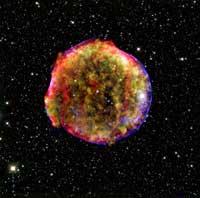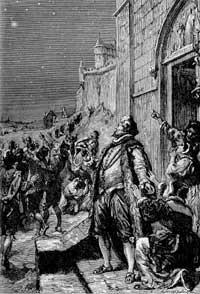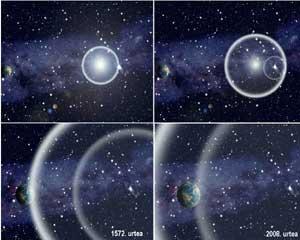The oldest supernova still makes it clear

In November 1572 a ‘new star’ appeared in the sky, which sharply illuminated a bright light in the constellation of Cassiopaeus. Many looked fascinated at this light, which no one had seen until then, because it was brighter than the rest of the stars, and they saw it with daylight. It was projected for sixteen months, until gradually it went off and could not be seen at first sight.
This was described by Danish astronomer Tycho Brahe: “I realized that a new star, brighter than the rest, was shining on myself.” The star was called Stella nova. Today we know that this brightness was not due to the birth of a star, but to its death.
In fact, Brah and all his contemporaries observed a supernova, an explosion of an old star. It was the first supernova visited and commented on in the Milky Way. At that time they did not know that supernovae were produced. They even believed that heaven was invariable. So they were surprised to see a light they suddenly did not know. And, of course, they knew nothing about the birth or death of the stars, and the interpretation they gave was ‘logical’: seeing a new star, a new one was created.

Image fascinated by the supernova Tycho Brahe, taken from an astronomy book of 1884. (Photo: C. Flammarion
Now, four hundred years later, we know that this brightness was a supernova, of which experts have much more information. They know that it was a white dwarf that exploded and that the components that dispersed in that explosion expanded at a speed of almost 30,000 kilometers per second.
Observation post month
Four hundred years have passed since Tycho Brah saw and described the supernova and, by now, the energy released in that explosion has been practically exhausted, and it is already impossible to detect the explosion itself.
What have astronomers at the Max Plank Institute then seen to say that Tycho is that supernova? So to speak, the echo of that explosion. As astronomers have explained, when the white dwarf explodes, light expanded in all directions, such as when fireworks explode, but, of course, on a much larger scale.
Those who saw the supernova at the time of Brahe saw the light that went directly to Earth. The light, which expanded in other directions, followed its path and could not be perceived from Earth. In that way the light bounced the interstellar dust particles. As the light bounced back in all directions, as in the initial explosion, but years after the explosion.

Supernova phases (from top to bottom and from left to right): When the light burst it began to expand, after a while the light bounced off with interstellar dust, the light of the time it burst came to Earth in 1572 and four hundred years later, in 2008, the light bounced off with interstellar dust. (Photo: Max Plank Institute of Astronomy
Researchers at the Max Plank institute have been able to check this second spread of light when it has passed near the Earth. However, this time they have had to observe with a telescope, since the light emitted in the rebound has been much lower than that emitted in the original explosion.
These are the methods astronomers use to know the phenomena that occurred at a time in space. The Tycho supernova is especially useful for astronomers because it is much closer to the supernovae observed on other occasions (often observing supernovae occurring outside the Milky Way) and, therefore, they can get much more information. Four hundred years after the supernova still has a lot to say, of course!
Published in 7K.
Buletina
Bidali zure helbide elektronikoa eta jaso asteroko buletina zure sarrera-ontzian











